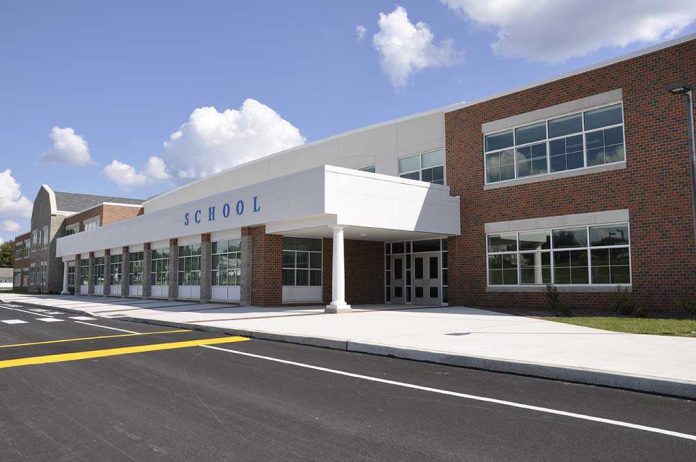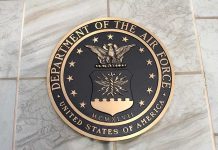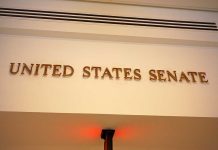
Schools across America have become unlikely battlegrounds in the nation’s immigration enforcement debate, with teachers quietly arming students with legal knowledge that could determine whether families stay together or are torn apart.
Story Snapshot
- Teachers nationwide are distributing “know your rights” leaflets to students following the Trump administration’s removal of schools as protected zones from immigration enforcement
- The revocation of “sensitive location” protections in January 2025 allows ICE agents to conduct operations at schools for the first time in recent history
- The One Big Beautiful Bill Act signed July 4, 2025 expanded detention and enforcement funding dramatically, intensifying grassroots educational efforts
- Educators face mounting pressure as they balance federal directives against their obligation to protect vulnerable students from trauma and family separation
When Safe Spaces Disappeared
For decades, American schools operated under an unspoken covenant. Immigration enforcement agencies maintained a hands-off approach to certain locations where community trust mattered most. Hospitals, houses of worship, and especially schools existed as sanctuaries where fear of deportation would not disrupt essential services. That changed overnight in January 2025 when the Trump administration eliminated protections for these sensitive locations. Schools that once represented stability for immigrant families became potential sites for enforcement actions, fundamentally altering the educational landscape for millions of children.
The Grassroots Response
Teachers found themselves on the front lines of a crisis they never anticipated. Classroom educators, guidance counselors, and school staff began noticing the signs immediately: increased absenteeism, visible anxiety among students, and heartbreaking questions from children about whether their parents would be home after school. The response emerged organically. Teachers partnered with advocacy organizations like the ACLU and National Immigration Law Center to obtain materials explaining constitutional rights. These leaflets, often simple one-page documents, outline what students and families can do if immigration agents approach them, emphasizing rights to remain silent and request legal counsel.
The distribution varies dramatically by location. In sanctuary cities and states with large immigrant populations, the effort is widespread and often supported by school districts. In other areas, teachers operate quietly, concerned about potential backlash from administrators or community members who support stricter enforcement. This underground network of educators has become a crucial information pipeline for families navigating an increasingly hostile legal environment.
Legislative Acceleration
The policy changes driving this crisis unfolded with startling speed. Executive Order 14287, issued April 28, 2025, specifically targeted sanctuary jurisdictions, threatening federal funding cuts for localities that refused to cooperate with immigration enforcement. Then came the One Big Beautiful Bill Act in July, legislation that provided unprecedented resources for detention facilities and enforcement operations. The combined effect created an immigration enforcement apparatus operating at a scale not seen in modern American history. Legal challenges emerged immediately, with civil rights organizations filing suits in multiple federal courts. Some temporary restraining orders slowed implementation, but the overall trajectory remained unchanged.
The Human Cost in Classrooms
The psychological impact on students is the story that statistics cannot capture. Mental health professionals working with school-age children report alarming increases in anxiety disorders, depression, and trauma symptoms among students from immigrant families. Children as young as elementary age express fears about losing parents, concern about who would care for younger siblings, and shame about their immigration status. Teachers describe students who cannot concentrate on lessons because they are consumed with worry about family safety. School attendance has declined in districts with high immigrant populations, with some families choosing to keep children home rather than risk encounters with enforcement agents.
The educational disruption extends beyond individual students. Teachers report that the pervasive atmosphere of fear affects entire classrooms, making it difficult to maintain the trust and security necessary for effective learning. Immigrant students who once participated actively have become withdrawn and silent. The ripple effects touch even students from citizen families, who witness the distress of classmates and struggle to understand why friends suddenly disappear from school.
Constitutional Questions and Community Fractures
Legal experts point to fundamental constitutional concerns about enforcement actions in educational settings. The rollback of due process protections, combined with expanded detention authority, raises questions about the balance between immigration enforcement and civil liberties. Schools traditionally function as extensions of government service, places where children exercise their constitutional right to education regardless of immigration status. The current policies create an inherent contradiction: schools must serve all children while potentially facilitating actions that separate those children from their families.
Communities have fractured along predictable lines. Supporters of the administration’s approach argue that immigration law must be enforced uniformly, without carving out special exceptions that undermine the rule of law. They contend that schools should not provide sanctuary to families who violated immigration statutes. Critics counter that targeting children and educational institutions represents a moral failing that will produce lasting damage to communities and individual lives. The debate has become deeply personal in towns where neighbors hold opposing views about whether immigration enforcement at schools represents justice or cruelty.
Economic and Social Reverberations
The enforcement campaign generates consequences that extend far beyond immigration policy. Local economies dependent on immigrant labor face workforce shortages as families flee to avoid detention. Small businesses close, construction projects stall, and agricultural operations struggle to find workers. Social networks that immigrants built over decades disintegrate rapidly when fear of deportation keeps people isolated at home. Churches report declining attendance. Community organizations see participation drop. The fabric of civic life frays as entire populations effectively go into hiding.
School districts confront their own operational challenges. Special programs for English language learners face uncertain futures with declining enrollment. Districts lose federal funding tied to student counts. Teachers trained to work with immigrant students find their expertise underutilized. The educational infrastructure built to serve diverse communities risks becoming obsolete if current trends continue.
Looking Forward Through Uncertainty
The situation remains fluid as legal challenges work through federal courts and communities adapt to new realities. Teachers continue distributing information about legal rights, knowing that knowledge represents the only protection they can offer students facing an uncertain future. Advocacy organizations document enforcement actions, preparing evidence for potential civil rights lawsuits. School administrators navigate the impossible balance between federal compliance and community protection, often choosing to err on the side of defending students while risking federal penalties.
What emerges from this crisis is a fundamental question about American values. The nation has always grappled with immigration, but targeting schools represents a departure from historical norms that protected children and education from enforcement priorities. Whether this approach achieves its stated goals of border security and law enforcement, or whether it produces a generation of traumatized children and fractured communities, remains to be seen. Teachers handing out legal rights leaflets understand they are documenting a moment that will be studied and debated long after current policies change. They continue anyway, believing that protecting students is not a political act but a professional and moral obligation that transcends partisan divisions.
Sources:
NAFSA: Executive and Regulatory Actions – Trump Administration
American Immigration Council: Mass Deportation and Democracy
American Immigration Council: Immigration Enforcement Harms Students and Schools
White House: Presidential Actions – Protecting the American People Against Invasion
New York City Bar Association: The Trump Administration’s Early 2025 Changes to Immigration Law
Cornell University: Guidance on Possible Immigration Changes 2025












